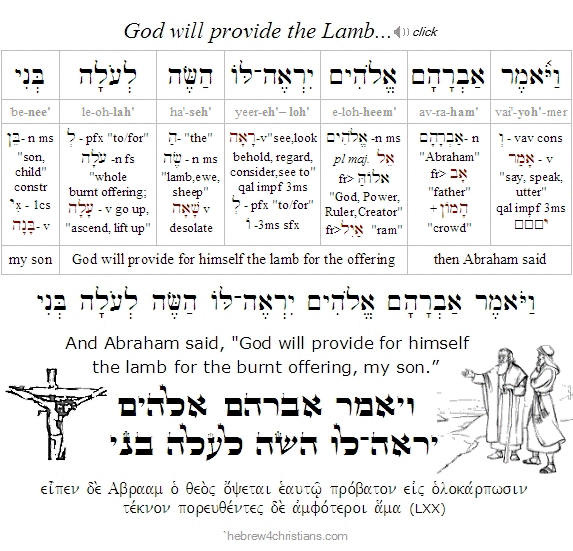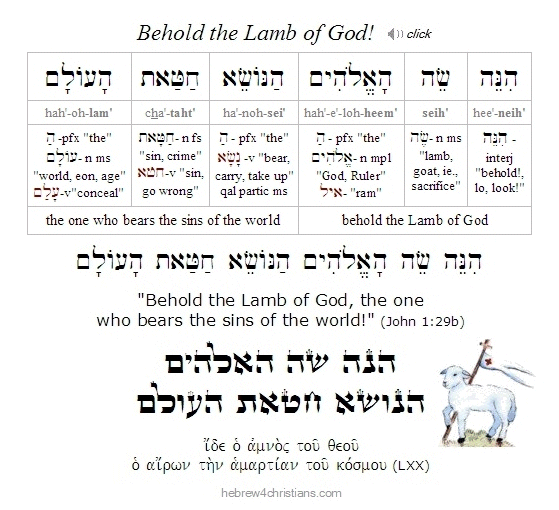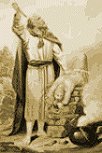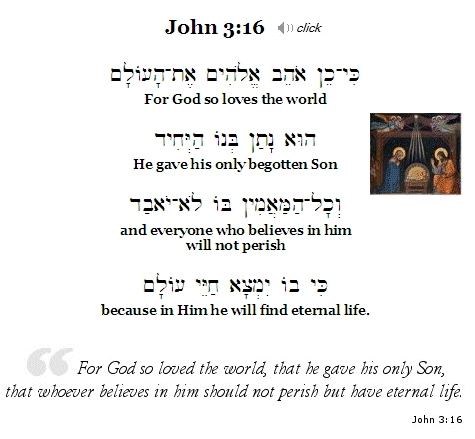|
Although many artists have pictured Issac as a youth during the Akedah, tradition says that he was 37 years old at the time of the binding. Isaac's age is derived from the tradition that the horror of Abraham's offering literally caused the death of his mother Sarah at age 127 (Gen. 23:1). (See the "Akedah of Sarah" for more.)
As Messianic believers, we understand the Akedah as a foreshadowing of the ultimate sacrifice the heavenly Father would give on our behalf. Unlike Abraham, God the Father actually offered His only begotten Son (ūæų╝ųĄū¤ ūÖųĖūŚų┤ūÖūō) Yeshua upon Moriah in order to make salvation available to all who believe (John 3:16-18; 1 John 4:9). As Abraham himself believed: ūÉų▒ū£ūöų┤ūÖūØ ūÖų┤ū©ų░ūÉųČūöųŠū£ų╝ūĢų╣ ūöųĘū®ų╝ūéųČūö / Elohim yireh-lo haseh ("God Himself will provide a lamb").
 |
Consider how the Akedah provides a prophetic picture of the Mashiach Yeshua as the "Lamb of God" (Seh haElohim) who takes away the sins of the world (John 1:29). Both Isaac and Yeshua were born miraculously; both were "only begotten sons"; both were to be sacrificed by their fathers at Mount Moriah; both experienced a "passion"; both willingly took up the means of his execution; both were to be resurrected on the third day (Gen. 22:5, Heb. 11:17-19); and both demonstrate that one life can be sacrificed for another ŌĆō the ram for Isaac, and Yeshua for all of mankind. Indeed, Isaac is a clear picture of the Greater Seed of Abraham to come, the One who would remove the kelalah (curse) and save us from death.
Note that the first occurrence of the word love in the Scriptures (ūÉūöūæūö, ahavah, Gen. 22:2) refers to Abraham's love for his "only" son who was offered as a sacrifice on Moriah (the very place of the crucifixion of Yeshua) -- a clear reference to the New Testament gospel message (John 3:16). Some scholars have noted that the word ahavah comes from a two-letter root (ūöūæ) with Aleph (ūÉ) as a modifier. The root means "to give" and the Aleph indicates first-person agency: "I" give. Love is essentially an act of sacrificial giving... The quintessential passage of Scripture regarding love (╬▒╬│╬▒ŽĆ╬Ę) in the life of a Christian is found 1 Corinthians 13: "Love seeketh not its own..." The antithesis of love is selfishness, the root of pride, fear, etc.
Both Isaac and Yeshua sacrificed their lives in obedience to their fathers' will. Both accepted the promise of God and believed that love was stronger than death. The passion and sacrifice of Isaac was a dramatic foreshadowing of the greater passion and sacrifice of Yeshua, the beloved Son of God Himself. The shared suffering of the Heavenly Father and Yeshua was the means by which "righteousness and peace have kissed" (Psalm 85:10), thereby restoring the children of promise to their original inheritance.
 |
|





